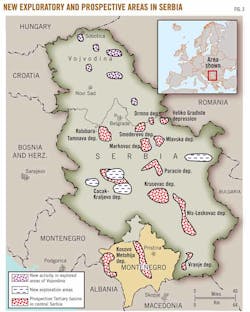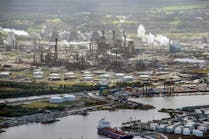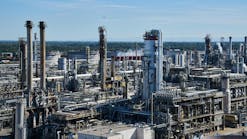View Article as Single page
New exploration in Serbia
The US Geological Survey in 2006 estimated that the Greater Hungarian Plain, as a part of the Pannonian Basin System, has a 95% probability of containing at least 343 million boe and a 5% chance of holding as much as 1.387 billion boe of undiscovered, recoverable resources.
One third of this petroleum system in Tertiary sediments underlies northern Serbia, loosely implying that its share of the resource ranges from 117 million to 460 million boe.
Besides conventional hydrocarbon resources there are unconventional resources, particularly of tight gas.9
Discovery of oil and natural gas requires the development of a modern petroleum-geological exploration concept that is based on the latest knowledge about geological setting and geodynamic development of the Pannonian basin's southeastern part and the Balkan Peninsula. It also would depend on the presence of Pretertiary hydrocarbons and experiences of geological research in the wider region (Italy, Albania, Romania, Austria, Hungary, and Bulgaria).10
The basic elements of a proposed petroleum-geological exploration program in next 10 years mostly depend on the results of planned regional exploration. Implementation of regional explorations will be carried out in phases where every next phase will depend on results of previous.
The first phase of regional exploration would involve 1,000 line-km of geophysical surveys, possibly supplemented by gravimetric-magnetic and magnetotelluric investigations. Field and laboratory testing of outcrops and detailed geochemical, petrological, biostratigraphic, and sedimentologic research is also needed.10
Development of new petroleum-geological exploration in Serbia on the basis of regional exploration results will be directed to:
• The wider zones of tectonic contact and overthrust of the basic structural-tectonic units in Serbia.
• The broad regional areas of shallow continental subduction zones.
• The wider zones of tectonic faults (reverse and radial) along which were formed by synsedimentation younger Neogene-Quaternary depressions.
Activity in densely explored northern Serbia is focused on satellites of existing fields. The main exploration techniques are 3D and detailed (density greater than 2.5 km/sq km) 2D seismic surveys. Here, the probability of success must be at least 70%.11
It is considered that greater discoveries are possible in insufficiently explored areas in the deeper parts of the basin (especially in tectonic collision zones) and in central Serbia. The new discoveries should be searched in structural and stratigraphic traps of unexplored Mesozoic and Paleozoic sediments. Exploration for structures in deeper sediments, unconventional reservoirs, and nonstructural traps represent projects of high risk. For that reason, the probability of success is considered to be 30%.11
Regional geophysical surveys started in the Cacak-Negotin area of central Serbia and a detailed seismic survey began in the Cacak-Kraljevo area in 2010. The first exploratory wells are to be drilled after the data are interpreted.
Areas of new exploration projects in Vojvodina and central Serbia are shown in Fig. 3. Defined prospective Tertiary basins in central Serbia are presented also, where in the Smederevo and Drmno depressions a few gas fields have been discovered.12 13
Displaying 3/5
View Article as Single page



